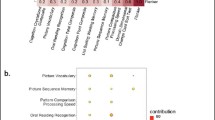Abstract
Mild cognitive impairment (MCI) may be caused by Alzheimer’s disease, Parkinson’s disease (PD), cerebrovascular accident, nutritional or metabolic disorders, or mental disorders. It is important to determine the cause and treatment of dementia as early as possible because dementia may appear in remission. Decline in MCI cognitive function may affect a patient’s walking performance. Therefore, all participants in this study participated in an experiment using a portable gait analysis system to perform walk, time up and go, and jump tests. The collected gait parameters are used in a machine learning classification model based on a support vector machine (SVM) and principal component analysis (PCA). The aim of the study is to predict different types of MCI patients based on gait information. It is shown that the machine learning classification model can predict different types of MCI patients. Specifically, the PCA–SVM model demonstrated better classification performance with 91.67% accuracy and 0.9714 area under the receiver operating characteristic curve (ROC AUC) using the polynomial kernel function in classifying PD–MCI and non-PD–MCI patients.


Similar content being viewed by others
References
Bratić B, Kurbalija V, Ivanović M et al (2018) Machine learning for predicting cognitive diseases: methods, data sources and risk factors. J Med Syst 42(12):243.
Nergui M, Murai C, Koike Y et al (2011) Probabilistic information structure of human walking. J Med Syst 35(5):835-844.
Morris R, Lord S, Lawson R. A et al (2017) Gait rather than cognition predicts decline in specific cognitive domains in early Parkinson’s disease. J Gerontol A Biol Sci Med Sci 72(12):1656–1662.
Prakash C, Kumar R, Mittal N (2018) Recent developments in human gait research: parameters, approaches, applications, machine learning techniques, datasets and challenges. Artif Intell Rev 49(1):1–40.
Montero-Odasso M, Verghese J, Beauchet O et al (2012) Gait and cognition: a complementary approach to understanding brain function and the risk of falling. J Am Geriatr Soc 60(11):2127–2136.
Gonçalves H, Moreira R, Rodrigues A et al (2018) Finding parameters around the abdomen for a vibrotactile system: healthy and patients with Parkinson’s disease. J Med Syst 42(11): 232.
Morris R, Lord S, Bunce J et al (2016) Gait and cognition: mapping the global and discrete relationships in ageing and neurodegenerative disease. Neurosci Biobehav Rev 64:326–345
Vienne A, Barrois R. P, Buffat S et al (2017) Inertial sensors to assess gait quality in patients with neurological disorders: a systematic review of technical and analytical challenges. Front Psychol 8:817.
Ibrahim N, Wibowo A (2014) Support vector regression with missing data treatment based variables selection for water level prediction of Galas River in Kelantan Malaysia. WSEAS Trans Mathematics 13:69-78.
Wang X. H, Deng X, Liu Y et al (2012) A method for missing data interpolation by SVR. IEEE Symposium on Electrical & Electronics Engineering, 24-27 June 2012, Kuala Lumpur, Malaysia. https://doi.org/10.1109/EEESym.2012.6258606
Zhang N, Cheng L, Wang P (2017) The use of support vector machines and artificial neural networks to fill missing data. Adv in Appl Mathematics 6(5):677–684.
Petersen R. C (2016) Mild cognitive impairment. Continuum (Minneap Minn) 22(2 Dementia):404–418.
Cortes C, Vapnik V (1995) Support-vector networks. Machine Learning 20:273–297.
Smola A. J, Schölkopf B (2004) A tutorial on support vector regression. Statistics and Computing 14:199–222.
Chen Y. B, Xu P, Chu Y. Y et al (2017) Short-term electrical load forecasting using the Support Vector Regression (SVR) model to calculate the demand response baseline for office buildings. Applied Energy 195:659–670.
Nourali H, Osanloo M (2019) Mining capital cost estimation using support vector regression (SVR). Resources Policy 62:527-540. https://doi.org/10.1016/j.resourpol.2018.10.008
Al-Kheraif A. A, Hashem M, Al Esawy M. S. S (2018) Developing Charcot–Marie–Tooth disease recognition system using bacterial foraging optimization algorithm based spiking neural network. J Med Syst 42:192.
Girginer N, Köse T, Uçkun N (2015) Efficiency analysis of surgical services by combined use of data envelopment analysis and Gray relational analysis. J Med Syst 39(5):56.
Akdemir B, Oran B, Gunes S, Karaaslan S (2009) Prediction of aortic diameter values in healthy Turkish infants, children, and adolescents by using artificial neural network. J Med Syst 33(5):379–388.
Afzali A, Babapour Mofrad F, Pouladian M (2018) Inter-patient modelling of 2D lung variations from chest X-Ray imaging via Fourier descriptors. J Med Syst 42(11):233.
Chen Y, Yang M, Chen X et al (2018) Sensorineural hearing loss detection via discrete wavelet transform and principal component analysis combined with generalized eigenvalue proximal support vector machine and Tikhonov regularization. Multimedia Tools & Appl 77:3775–3793
Bai Y, Sun Z, Zeng B et al (2019) A comparison of dimension reduction techniques for support vector machine modeling of multi-parameter manufacturing quality prediction. J Intell Manuf 30:2245-2256. https://doi.org/10.1007/s10845-017-1388-1
Lasisi A, Attoh-Okine N (2018) Principal components analysis and track quality index: a machine learning approach. Transportation Research Part C: Emerging Technologies 91:230–248
Acknowledgements
This study was funded by the National Taipei University of Technology and MacKay Memorial Hospital (NTUT-MMH-107-06, MMH-TT-10706).
Author information
Authors and Affiliations
Corresponding author
Ethics declarations
Conflict of Interest
Pei-Hao Chen, Chieh-Wen Lien, Wen-Chun Wu, Lu-Shan Lee, Jin-Siang Shaw declare that they have no conflict of interest.
Ethical Approval
All procedures performed in studies involving human participants were in accordance with the ethical standards of the institutional and/or national research committee and with the 1964 Helsinki declaration and its later amendments or comparable ethical standards. The study was reviewed and approved by the MacKay Memorial Hospital Institutional Review Board (number 18MMHIS005e and 18MMHIS152).
Informed Consent
Informed consent was obtained from all individual participants included in the study.
Additional information
Publisher’s Note
Springer Nature remains neutral with regard to jurisdictional claims in published maps and institutional affiliations.
This article is part of the Topical Collection on Systems-Level Quality Improvement
Electronic supplementary material
ESM 1
(XLSX 14 kb)
Rights and permissions
About this article
Cite this article
Chen, PH., Lien, CW., Wu, WC. et al. Gait-Based Machine Learning for Classifying Patients with Different Types of Mild Cognitive Impairment. J Med Syst 44, 107 (2020). https://doi.org/10.1007/s10916-020-01578-7
Received:
Accepted:
Published:
DOI: https://doi.org/10.1007/s10916-020-01578-7




